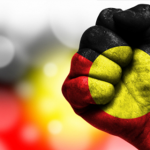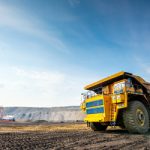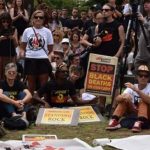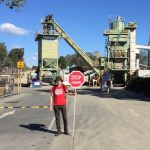The Ongoing Colonisation of the Kimberley
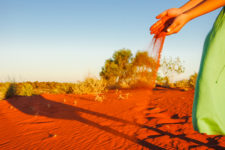
In March 2015, 18,000 people across Australia turned out at protests against the forced closure of up to 150 remote Aboriginal communities in Western Australia, as the Barnett state government of the time had announced they were no longer economically viable.
The slated closures followed on from a federal government decision to cut the funding that covered the municipal and essential services to these communities, many of which are in the Kimberley region. However, some pointed to the move as being a blatant land grab by government.
Much of the development proposals contained in the White Paper on Developing Northern Australia – released by the Abbott government in July 2015 – would have been facilitated by these closures, which have never taken place in the systematic way proposed by former premier Colin Barnett.
And those in the Kimberley region are no strangers to preventing industry from riding roughshod over their interests. Widespread demonstrations against a proposed liquified natural gas (LNG) plant at Walmadan-James Price Point saw Woodside Petroleum and its partners pull out in 2013.
The push for industrialisation
These days, mining magnate Gina Rinehart has her eyes set on the Kimberley’s Raparapa-Fitzroy River. She plans to invest $285 million to divert water from it to irrigate her cattle stations. Although, given the river is the region’s main water source, local First Nations communities are opposed to it.
Another project that’s drawn the ire of locals, is the sealing of the notorious Cape Leveque Road that leads out to the Dampier Peninsula, so it can be turned into a tollway. The concerns surrounding this are that it could turn the pristine Aboriginal communities on the other side into tourist traps.
Further encroachments upon the Kimberley environment have resulted from the McGowan government’s partial lifting of a statewide fracking ban, with WA’s northernmost region set to bear the brunt of this development.
And then there’s the controversy over Shanghai Zenith. The Chinese company was issued with a stop work notice in June over the illegal clearing of land at the Kimberley’s Yakka Munga station. The notice was issued following a blockade by traditional custodians the Nyikina Mangala people.
The fragile environment
The Kimberley was struck by the largest recorded earthquake in Australia on 14 July, when a 6.6 magnitude undersea quake struck off the coast of Broome. And since that time, the region has suffered through over 70 aftershocks.
It’s the first earthquake of its kind ever to have hit the region and it’s led to questions being raised about the impact that increasing industrialisation could be having upon the local environment, especially when it comes to hazardous practices such as fracking.
But, even though the closure of the remote communities is no longer a specific directive coming from government, the proposals behind it contained in the Northern Australia White Paper are still a priority, including widespread agricultural development in the Kimberley , designed to make it the nation’s food bowl.
And as we’ve seen just yesterday, with the extinguishment of native title over 1,385 hectares of Wangan and Jagalingou country in Queensland’s Galilee Basin to make way for the Adani coalmine, when it comes to Australian governments the interests of industry come first over the rights of First Nations peoples.


